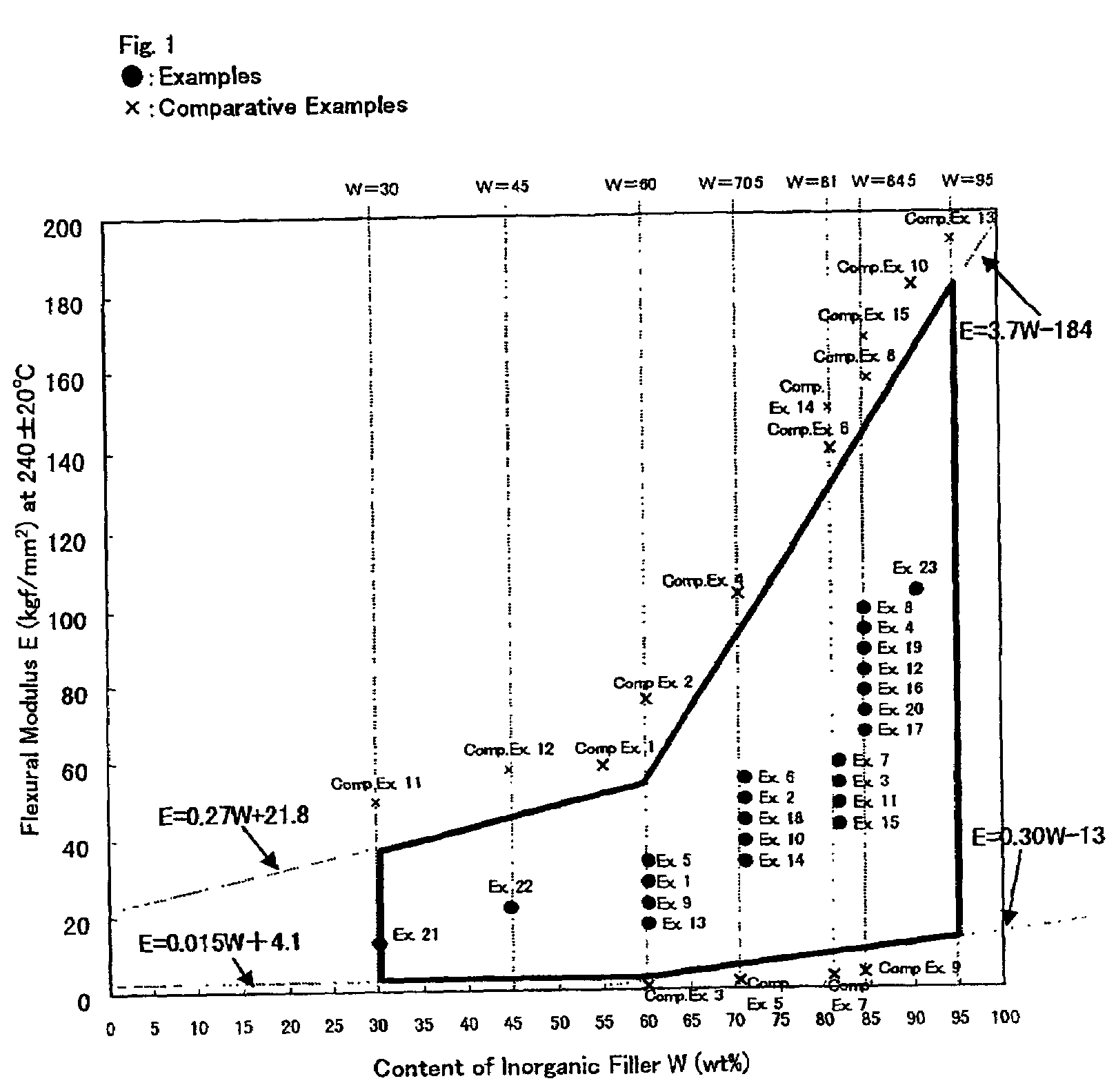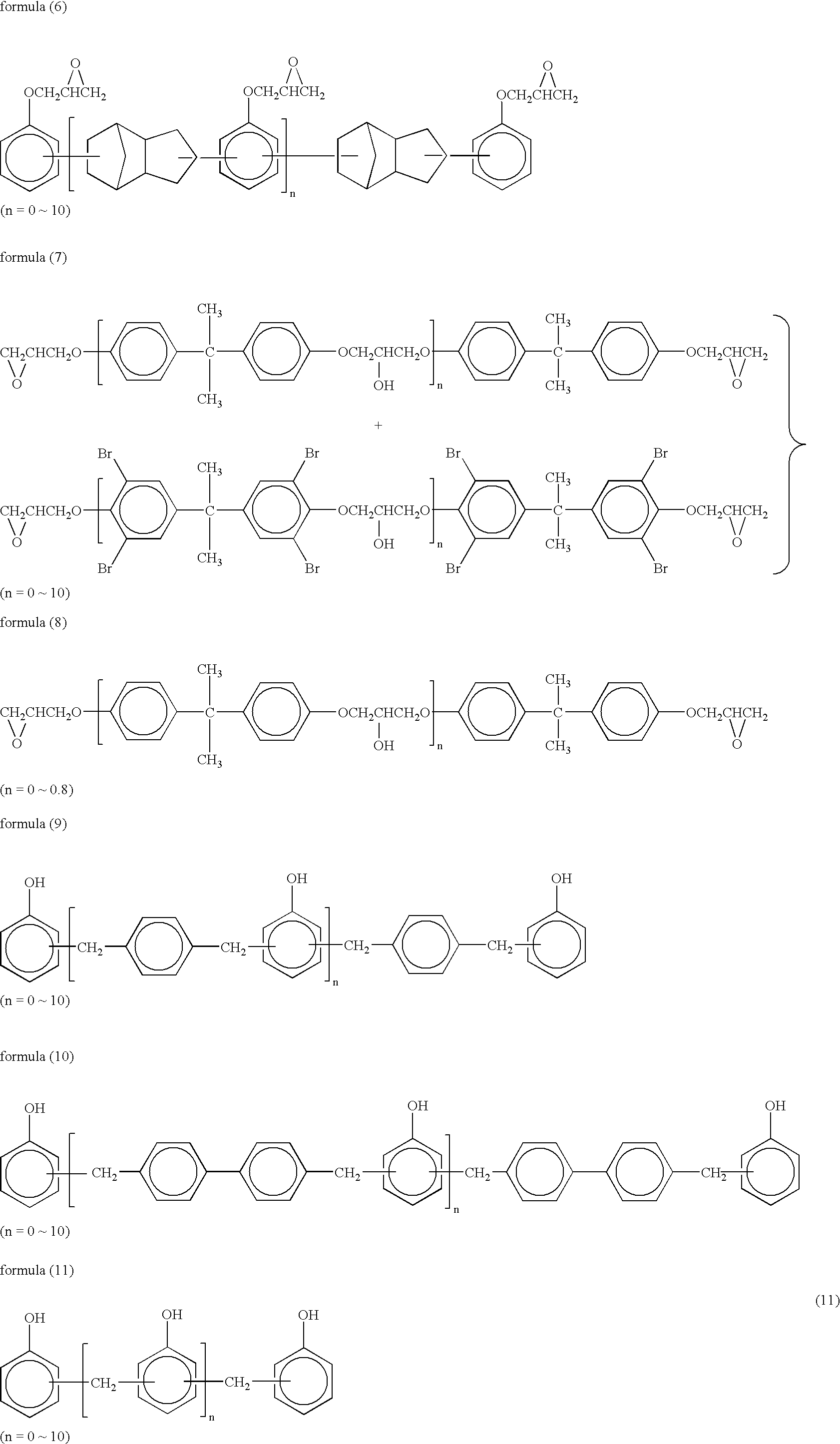Flame-retardant epoxy resin composition and semiconductor device made using the same
- Summary
- Abstract
- Description
- Claims
- Application Information
AI Technical Summary
Benefits of technology
Problems solved by technology
Method used
Image
Examples
example 1
[0073]16.58% of Epoxy resin 4, 20.23% of Phenolic resin 2, 60.0% of fused flake silica powder, 0.51% of carnauba wax, 0.40% of triphenylphosphine (T.P.P.), 1.57% of a silane coupling agent and 0.71% of carbon black were preliminarily mixed at ordinary temperature, and then kneaded for 5 minutes on a roll at 100° C. The thus kneaded material was cooled and then ground to obtain a resin composition.
[0074]The resin composition obtained in Example 1 was tableted, and then molded under predetermined conditions [a single plunger type transfer molding machine, molding temperature=175° C., tablet preheating=85° C., molding time=120 seconds, injection time=15 seconds, and injection pressure 100 kgf / cm2 (practical pressure)]. Afterward, the thus molded article was postcured (175° C., 4 hours) to obtain a cured article.
[0075]A molded plate for the measurement of flexural modulus was prepared in accordance with JIS K6911, and a molded plate for the test of flame retardancy was prepared in accor...
example 21
[0078]32.07% of Epoxy resin 8, 35.59% of Phenolic resin 5, 30.0% of fused flake silica powder, 0.34% of 1,8-diazabicyclo[5.4.0]undecene-7 (D.B.U) and 2.0% of a silane coupling agent were heated and molten while mixed by a batch type stirring machine, and then defoamed under vacuum to obtain a resin composition. The thus obtained resin composition was poured into a mold in the state of reduced pressure, and then cured under predetermined conditions (80° C.×2 hours+120° C.×2 hours+200° C.×5 hours) to obtain a cured article.
examples 2 to 20 and 23
, Comparative Examples 1 to 10 and 13 to 15
[0110]Samples were prepared in the same manner as in Example 1 in accordance with blend ratios in Tables 1 to 8, and characteristics were then evaluated by the same procedure as in Example 1. The results of the evaluation are shown in Tables 1 to 8 and FIG. 1.
PUM
| Property | Measurement | Unit |
|---|---|---|
| Power | aaaaa | aaaaa |
| Temperature | aaaaa | aaaaa |
| Fraction | aaaaa | aaaaa |
Abstract
Description
Claims
Application Information
 Login to View More
Login to View More - R&D
- Intellectual Property
- Life Sciences
- Materials
- Tech Scout
- Unparalleled Data Quality
- Higher Quality Content
- 60% Fewer Hallucinations
Browse by: Latest US Patents, China's latest patents, Technical Efficacy Thesaurus, Application Domain, Technology Topic, Popular Technical Reports.
© 2025 PatSnap. All rights reserved.Legal|Privacy policy|Modern Slavery Act Transparency Statement|Sitemap|About US| Contact US: help@patsnap.com



